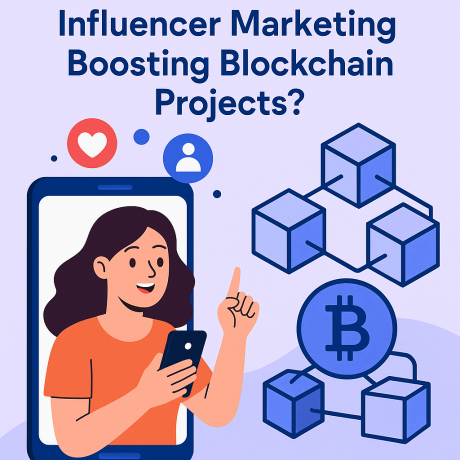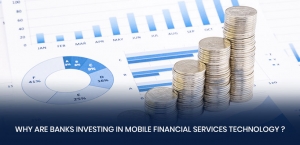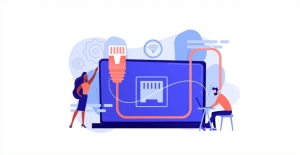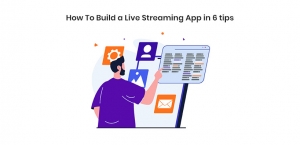In the rapidly evolving world of Web3, one of the most powerful tools for project growth and community building is influencer marketing. From crypto tokens to NFT launches, influencers are playing a crucial role in increasing visibility, driving adoption, and establishing credibility. But why exactly is influencer marketing so effective for blockchain projects?
Let's dive deep into the mechanisms behind this trend and explore how Web3 influencers are reshaping the future of decentralized technologies.
The Rise of Web3 Influencer Marketing
Traditional marketing often struggles to gain trust in the decentralized ecosystem, where users are tech-savvy, skeptical, and demand transparency. That's where influencer marketing enters the game.
Web3 influencers have built authentic communities on platforms like X (Twitter), YouTube, Discord, and Telegram, where followers look to them for insights, alpha leaks, and new project discoveries. Their opinions can turn obscure DeFi projects or blockchain startups into overnight sensations.
They are not mere promoters, but teachers, early adopters and trend setters all of whom are active shapers of Web3 space.
Why Influencer Marketing Works for Blockchain Projects
- Credibility and Confidence
The crypto space is riddled with scams and rug pulls. Consequently, the most powerful currency is trust.
When influencers review and share their insights honestly on consistent basis, they gain loyalty of their followers. By investing in a blockchain project, they are actually lending their credibility to a project, which is a critical resource to emerging/quieter projects.
A tweet from a known Web3 KOL (Key Opinion Leader) can validate your project in the eyes of thousands, often more effectively than paid ads.
- Community-Driven Ecosystems
Unlike Web2, Web3 projects thrive on community engagement. Whether it's token governance, staking protocols, or DAO participation, success depends on how active and loyal your user base is.
Influencer marketing plays a key role in community-building. Influencers organize Twitter Spaces, AMAs and tutorial threads that sponsor users and make them stay active.
This is especially powerful in a decentralized world, where trust is distributed and communities self-organize around personalities and values rather than companies.
- Personalization to achieve High Conversion
As compared to generic banner advertising or even Google PPC, influencer promotions seem more like personal suggestions. The audience already trusts the influencer, so when they talk about a new crypto project, listeners are far more likely to explore it.
Some of the influencers take it a step further by:
- Exchange of their investment plans
- Offering tutorials on how to use a DApp
- Hosting airdrops or giveaways
These personalized touches make blockchain marketing more human and interactive, boosting conversion rates.
- Virality and Networks
The Web3 arena is very dynamic. One tweet or meme can make a token price rocket or even make a project mainstream.
These viral moments can be initiated by the influencers. Same whether it is in a meme thread or a crazy prediction or a hot take, they stir conversations that have reverberations across the community.
The network effects of blockchain ecosystems implies that every new participant adds value to the project, hence issue of seeking the attention of a large audience is exponentially important.
- Affordable to Startups
Many blockchain startups operate on lean budgets. It may not be possible to hire big PR companies or carry out large advertisement campaigns.
The collaboration with micro-influencers or niche creators may provide:
- High ROI
- Better targeting
- Flexible pricing (they may be paid in tokens)
This makes influencer marketing an attractive go-to strategy for early-stage Web3 ventures.
- Educational Value
Many blockchain projects have a steep learning curve. Concepts like yield farming, layer 2 scaling, or zk-rollups are not easy to grasp.
A common role that influencers usually play is that of an educator and they simplify things by putting videos, infographics and threads. This assists in welcoming new users and advancing the present ones.
- Smart users will tend to:
- Carry your tokens
- Take part in governance
- Word to the wise
This would be particularly useful in a place where retention and loyalty is worth much more than just a figure.
Influencer Blockchain Growth in the Real World
- Solana (SOL)
During its infancy, Solana used the help of influencers such as Anatoly Yakovenko (its co-founder) and other cryptocurrency Twitter accounts to describe its technical benefits. Organic interest was spread by content such as threads discussing the reasons why Solana is faster than Ethereum.
- Friend.tech
Friend.tech exploded in popularity thanks to well-timed tweets from major Web3 influencers, who drove a sense of FOMO and curiosity. The result? In several days, thousands of users became part of it.
- Ordinal NFTs
Niche Bitcoin maxis and influencers made up a toxic combination of Twitter threads, YouTube explainers, and Telegram shills that were the catalyst of the rise of Bitcoin Ordinals. Their excitement brought millions of people into interest in an area of the blockchain that was otherwise unexceptional.
How to Build an Influencer Marketing Strategy for Your Blockchain Project
- Discover the Right Influencers
Focus on:
- Relevance to niche (DeFi, NFTs, GameFi, layer 2s, etc.)
- Engagement rates
- Alignment platform (Twitter, TikTok, YouTube, etc)
Avoid influencers with fake followers or those known for pump-and-dump schemes.
- Collaborate Authentically
Allow influencers to develop the messages in their style. In Web3, authenticity is more important than any other place.
Consider to engage them in:
- Twitter Spaces
- Tutorial videos
- Content series about your roadmap, whitepaper, or tokenomics
- Measure Results
Use UTM links, referral codes, and engagement tracking to evaluate performance. Do people click or sign up? Do people purchase tokens? Use the data and adjust your campaign.
- Establish Relationships to Last
The long-term campaigns are the most successful. Rather than one-off shill posts, look for influencers who are willing to become true partners—advisors, token holders, or even community managers.
What to Watch Out discuss Not only did the Soviet army consist of mixtures of ordinary individuals, but it was also challenged with dislorations, -invocations, and other mixups.
While influencer marketing offers huge advantages, it's not without pitfalls:
- Your credibility can be ruined by false advertisement and paid hype.
- Regulations around crypto promotions are tightening, especially in the U.S. and Europe.
- Just because you paid a person on Twitter or Instagram to promote your product does not mean that all the influencers are going to do it with pure satisfaction. You can find yourself in a situation where they simply waste your tokens right after the paid campaign.
Be selective. Make your due diligence. and not forget the rule: a small and faithful community is preferable to a big and distant.
Final Thoughts
Influencer marketing is more than a trend—it's a cornerstone of successful Web3 marketing strategies. In a space driven by community, trust, and engagement, influencers act as bridges between blockchain projects and the wider world.
Whether you're launching a new token, building a DAO, or rolling out an NFT marketplace, collaborating with the right Web3 influencers can be the catalyst that propels your project forward.
Blockchain is the future that will not be shown on telly- it will be tweeted, streamed and disseminated by the community.






